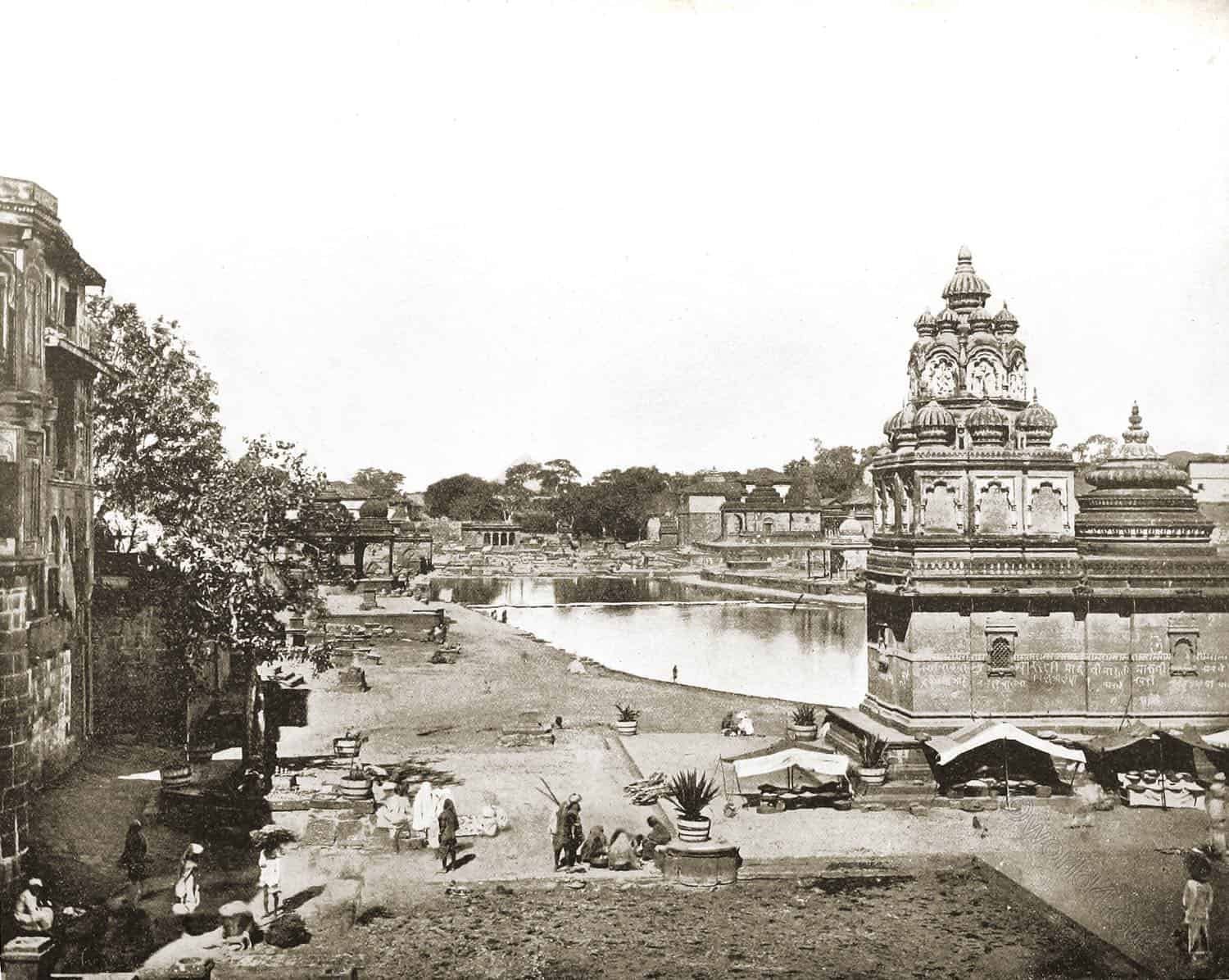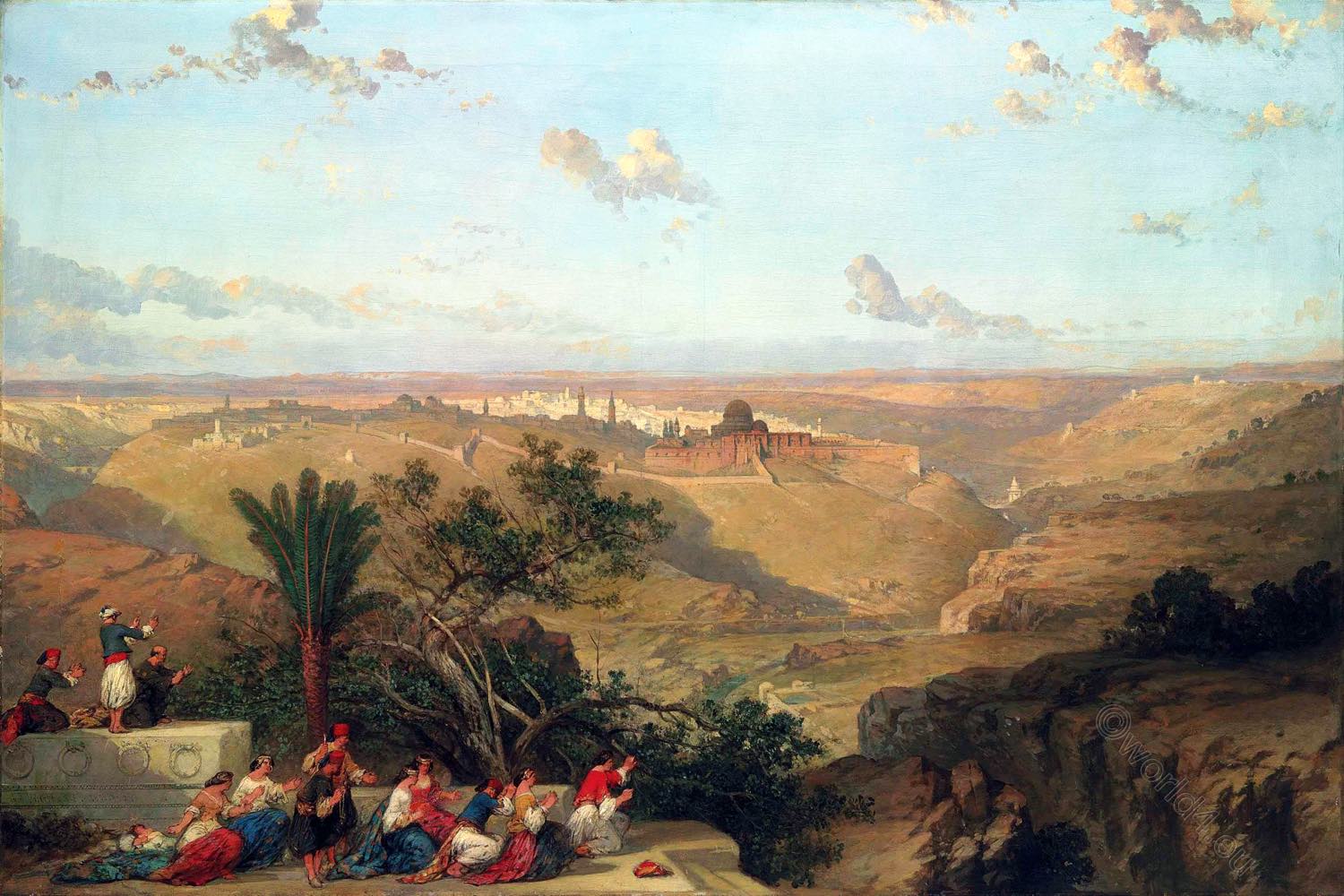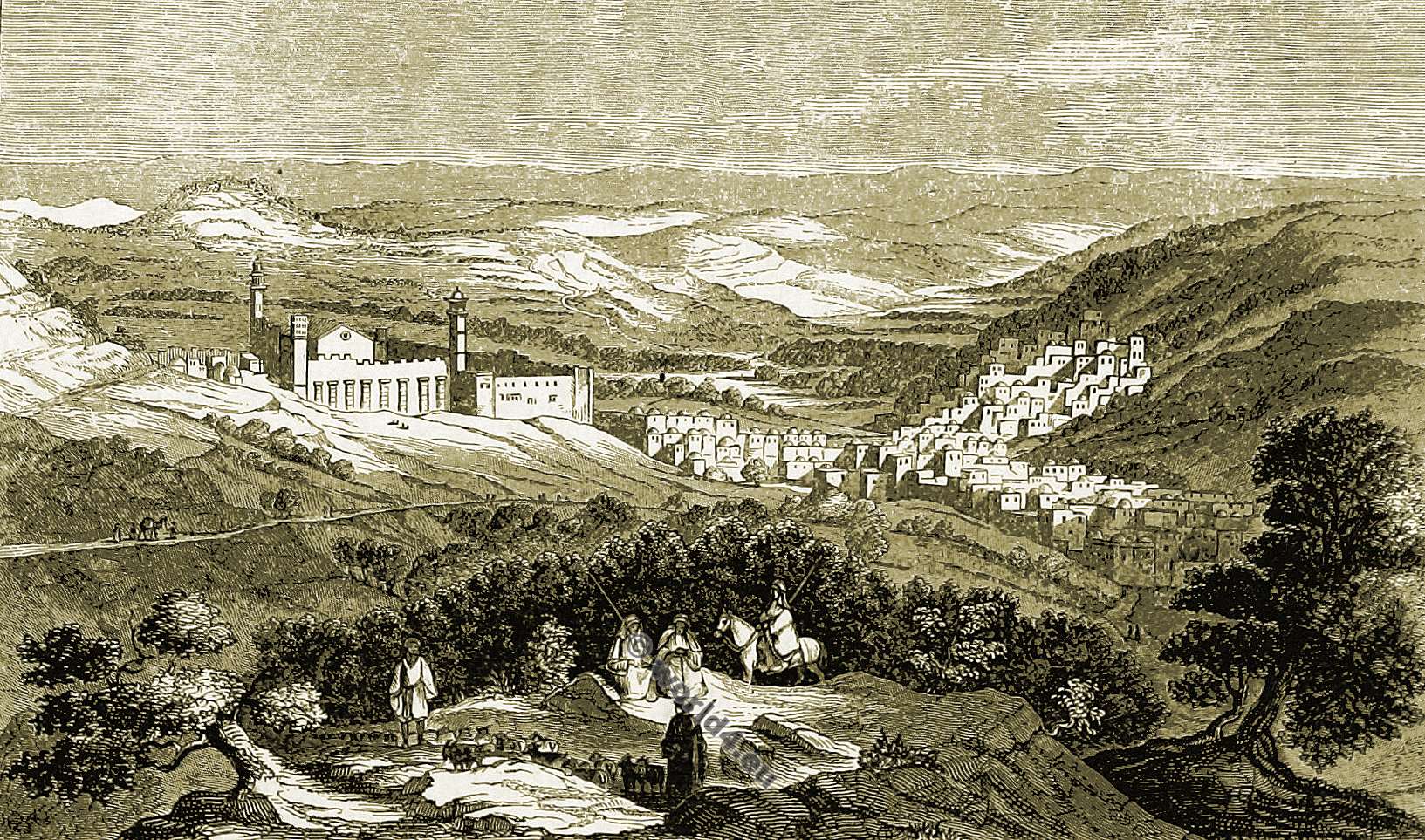
CHAPTER I
BENARES, THE SACRED CITY
IN THE VEDIC TIMES
History, in the conventional European sense, has never possessed much interest for the Hindu mind. Thoroughly permeated with the idea of the unreality of material things, the Brahmin priesthood, while taking extraordinary precautions to preserve their inheritance of spiritual culture, have never troubled themselves to mark the footprints which kings and dynasties leave upon the sands of time. It is chiefly through the exertions of European scholars, with the help of the old Buddhist records, that the main outlines of Indian history, previous to the Mohammedan invasions, have been made intelligible.
The detailed history of the petty kingdoms into which northern India was divided would probably possess little interest, even if it were sifted out of the wild legends which Eastern imagination has woven into it. Benares will always possess supreme interest as the chief centre of the evolution of two of the great world-religions – Brahmanism and Buddhism; but while the development of Buddhism can be, to some extent, traced and mapped out with exact dates and events, the history of Brahmanism must always be regarded from a different stand-point.
Of the antiquity of Benares there can hardly be any question. From its peculiar situation on the banks of a splendid river, with its eastern boundary converted by the current into a magnificent natural amphitheatre, facing the rising sun, it is not unreasonable to conjecture that even before the Aryan tribes established themselves in the Ganges valley, Benares may have been a great centre of primitive sun-worship, and that the special sanctity with which the Brahmins have invested the city is only a tradition of those primeval days, borrowed, with so many of their rites and symbols, from their Turanian predecessors.
The first definite historical event known about Benares is that the Kâsis, one of the Aryan tribes which were then occupying northern India, established themselves in the Ganges valley, near Benares, at a date supposed to be between 1400 and 1000 B.C. The origin of the Aryans is still a much-debated question, but the researches of ethnologists have completely disturbed the theory of philologists, which placed the home of the Aryan people in Central Asia. and point to more northern and western latitudes as the cradle of the race. Certainly the Aryans brought with them into India all the habits and ideas of northern people-they were fair-skinned, ate horse-flesh and beef, and drank fermented liquor the soma juice, which they held to be the amrita, or nectar of the gods. Like the ancient Britons they were polyandrous.
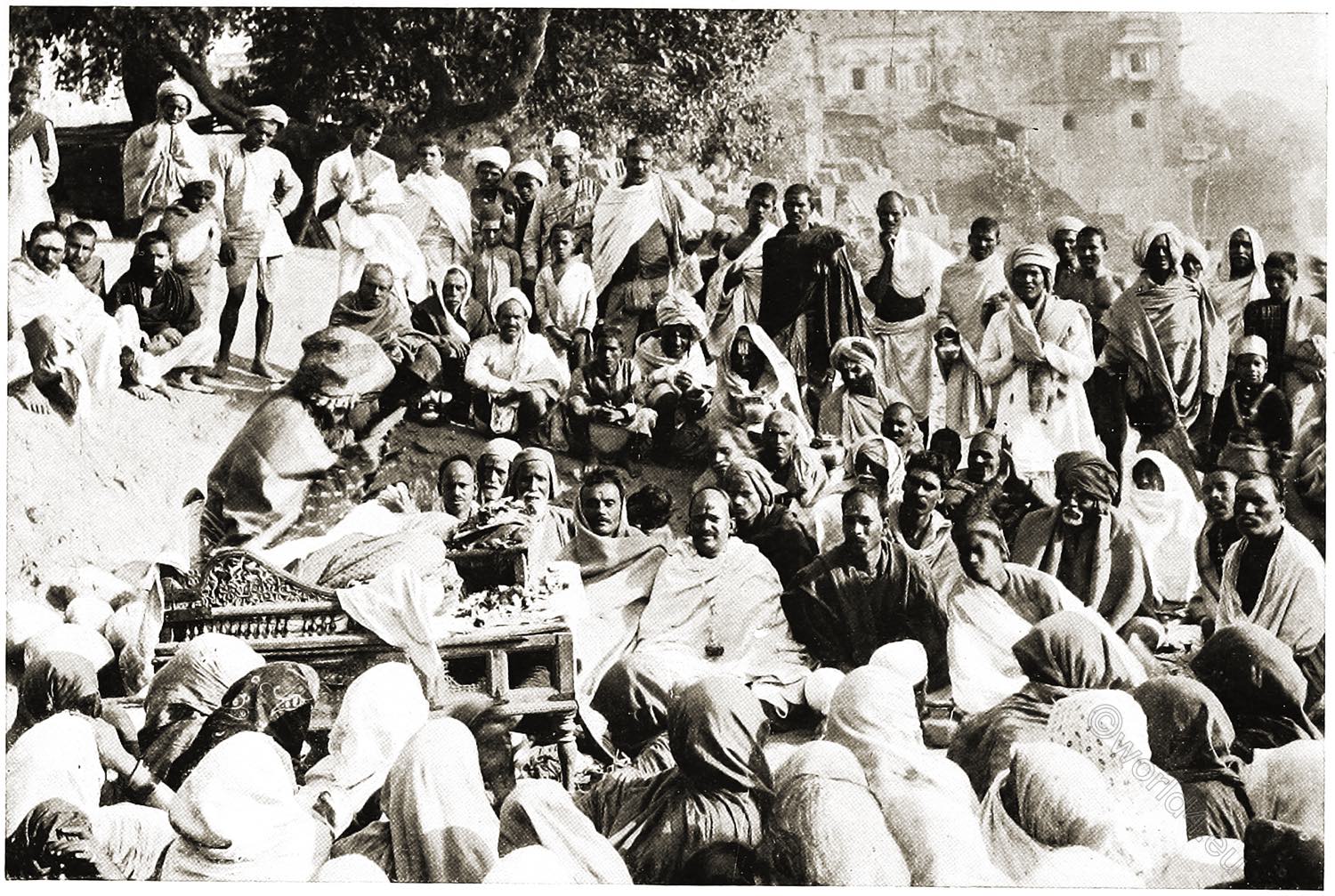
EARLY WORSHIP
Their religion, at first, was a simple adoration of the beneficent powers of Nature, with little of the mysticism and dread, born of a tropical environment. They worshipped the sky, Dyaus-pitar, as Heavenly Father, and Prithivi, the earth, as Mother; Varuna, the all-embracing firmament, the upholder of heaven and earth, king of gods and men, who made the sun and moon to shine, whose breath was the wind-
“He knows the path of birds that fly through heaven, and sovran
of the sea,
He knows the ships that are thereon.
True to his holy law, he knows the twelve moons with their
progeny, 1)
He knows the moon of later birth.
He knows the pathway of the wind, the spreading-high and mighty
wind.
He knows the gods above.”
- Rig-Veda, Hymn 25. Grifith’s translation.
1) The days.
They invoked Indra, the rain-god, as brother, friend, and father, who heard their prayers; Agni, the Fire-god, slayer of demons, who protected them day and night from evil; Surya, “the soul of all that not, or moveth”, and Savitri – the sun and sunshine.
The early Vedic hymns are redolent with the fragrance of a bright and genial spring-time, reflecting the joy of a simple, pastoral life in the golden age, when the children of men played with Mother Nature in her kindest moods, and the earth and the stars sang together. The gloom and terrors of tropical forests, the fury of the cyclone, the scorching heat, and the mighty forces of the monsoon floods, had not yet infected Aryan life and thought. Their poets loved to sing the beauties of the dawn-Ushas, the lovely maiden, daughter of the sky; but her dark sister, Night, was also to them a kindly divinity:-
“Friend of the home, the strong and youthful maiden,
Night, dear to Savitar the god, and Bhagu,
All-compassing, all-glorious, prompt to listen, hath with her
greatness filled the earth and heaven.
Over all depths hath she gone up, and mounted, Most Mighty One,
the sky’s exalted summit.
Over me now the loving Night is spreading with her conspicuous
God-like ways like Mitra.
Excellent, high-born, blissful, meet for worship, Night, thou hast
come; stay here with friendly spirit.
Guard us the food for men that we have gotten, and all prosperity
that comes of cattle.”
Atharva Veda. Book xix, 49. Grifith’s translation.
They had no idols, and the nature-gods whom they worshipped provided their only temples. The Aryan ritual consisted of burnt-sacrifices, oblations of clarified butter, and libations of soma-juice or milk, accompanied by hymns of praise and prayer.
Far back in time, in that dim region which modern historical telescopes are ever trying to explore, the father of the family was both sacrificer and priest; but when the Aryans appeared in India, their ritual had already become so complicated as to call for a separate class of priests and poets, like the Druids-the Brahmins of ancient Europe, Caste was still unknown, but the poets and thinkers of the people had already begun to concern themselves with those speculations regarding the origin of all things which form the basis of modern Hinduism:-
“There was neither existence, nor non-existence,
The kingdom of air, nor the sky beyond.
What was there to contain, to cover in-
Was it out vast, unfathomed depths of water?
There was no Death there, nor Immortality.
No sun was there, dividing day from night.
Then was there only THAT, resting within itself.
Apart from IT, there was not anything.
At first within the darkness veiled in darkness,
Chaos unknowable, the All lay hid,
Till straightway from the formless void made manifest
By the great power of heat was born that germ.”
Rig Veda. Hymn of Creation.

EARLY RITUAL
There had also sprung up the idea of the compelling power of prayer and sacrifice, which became the key-note of the later Brahminical ritual. Certain individuals, families, or tribes acquired a reputation for tbe success which followed their sacrifices and prayers, and by a post hoc, propter hoc line of reasoning, it was assumed that the divine powers could not only be propitiated, but coerced into granting the favours desired, whether it was victory over enemies, wealth, rain, recovery from sickness, or spiritual benefits.
The hymns and prayers which seemed specially efficacious were handed down to posterity as most precious legacies, and the rule of sacrifice gradually developed into a complicated science, the practice of which required the most exact knowledge and experience. The priestly office thus tended more and more to become a hereditary position of great power and responsibility, for though the virtue ascribed to a successful sacrifice was great, the disasters which would result from a blundering performance might involve a whole tribe or kingdom in ruin.
Every tribe had a purohita, or high priest, who always performed the proper sacrifices before a battle, and claimed a liberal share of the booty which might be gained from a victory. The composers of the sacred hymns, now known as the Rishis, or sages, also expected and generally received handsome rewards for their services. But some of them have celebrated the niggardliness of their patrons in sarcastic verses, which shows that their minds were not always above worldly considerations.
One disappointed author, who had composed an ode to the Ashvins, the twin heralds of the dawn, and received as a reward a chariot without horses or harness, expresses his indignation thus;-
“This teamless chariot I received from the Ashvins, owners of
many horses. It gratified me greatly!
It must get on somehow with me to the place where men drink soma,
the precious car!
Dreams and wealthy niggards, both are unprofitable.
Let me have nought to do with them.”
Though the purohitas and priests thus occupied a very important place in Aryan society, they were as yet entirely subordinate to the nobles and chiefs of the warrior class, and were very far fro ill the position of absolute supremacy which they gained for themselves in later times.
As in the middle ages in Europe, the functions of warrior and priest were often combined. Many of the finest hymns preserved in the sacred books of the Hindus were composed by the Kshatriyas, or fighting chiefs.
A very important part of the sacred lore treasured in the religious literature of the Hindus is contained in the Upanishads, the records of the debates on metaphysical questions and the theory of sacrificial practice which excited the profoundest interest of our Aryan forefathers.
Kings, nobles, and priests, wise men and women, took part in the discussions. The greatest freedom of thought was allowed, and the rules which regulated the debates were only those which were approved of as likely to lead to sound conclusions. The rewards for debaters who showed profound thought and argument were not less liberal than those which were given to successful composers and sacrificers, but the penalties for those who infringed the rules of logic, or spoke foolishly, were heavy.
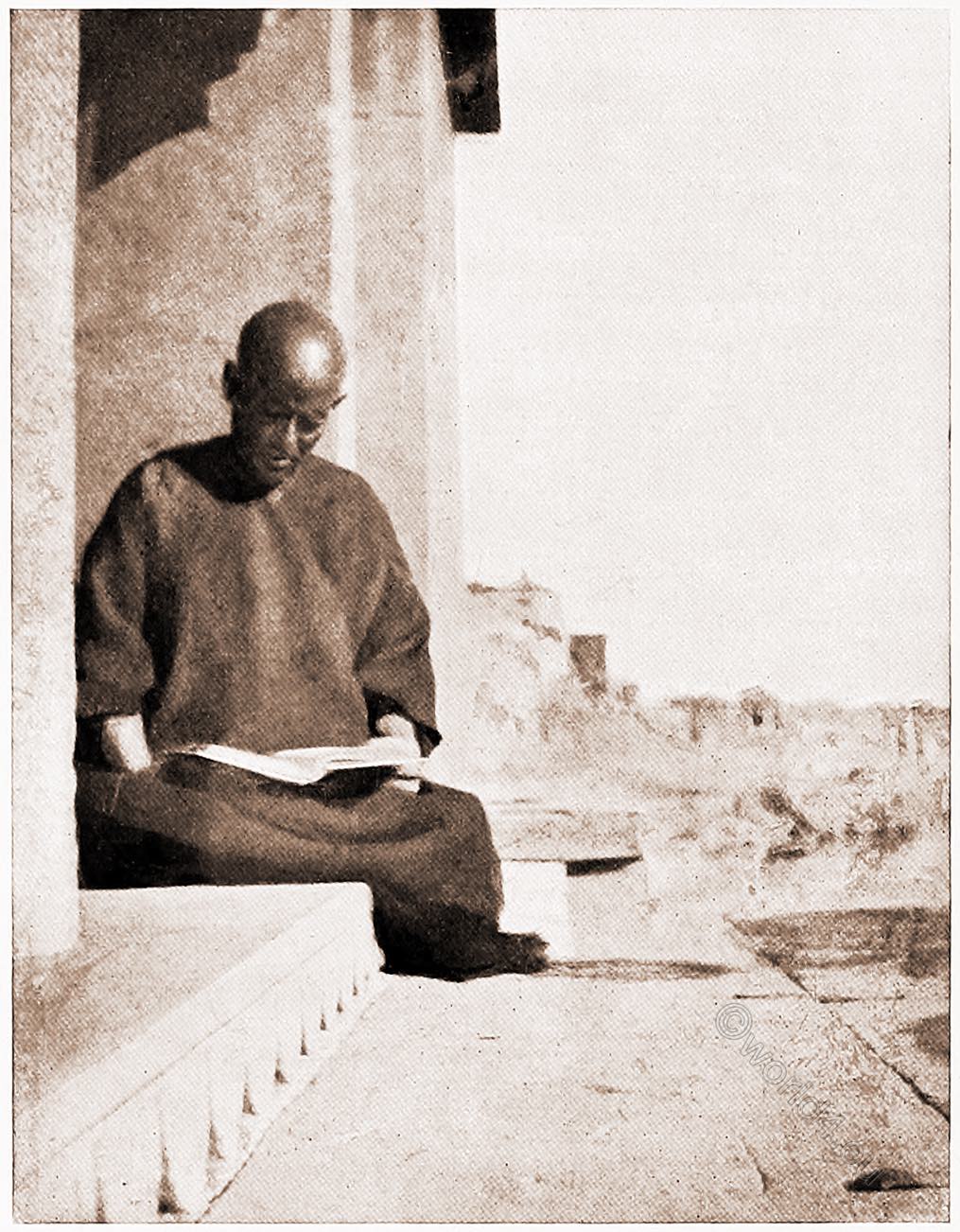
RELIGIOUS LITERATURE
These disputations, or “Brahmodyams”, afterwards became so much a national institution, that, if we may believe the Sanskrit traditions, even kings would yield their thrones and become the servants or pupils of the wisest philosophers.
The methods of the Inquisition, and the argument of the sword and stake, never became popular with Hindu religious teachers. Whatever may be urged against the Hindu system, it must be admitted that it has always stood for absolute liberty of conscience. One religious movement after another has swept over Indian soil, but until the Mohammedan conquest it was never considered justifiable, or necessary, to suppress the voice of the preacher and the argument of the philosopher with torture, bloodshed, and judicial murder.
The old Buddhist records, though referring to a considerably later time than the Vedic period, throw much light on the character of these ancient universities, and on the distinctions which were given as rewards of learning.
A member of the Buddhist order who had thoroughly mastered one section of the philosophical books was exempted from the common drudgery of monastic duties. As he progressed the rewards were proportionately increased. When he could expound two sections he was allowed to reside in a furnished upper room. The privileges attached to expert knowledge of the third and fourth sections were the services of a number of attendants, first of a lower class, and then of lay-disciples, called “pure men”, upasakas. For the fifth section he was granted an elephant carriage, and finally when he attained to complete knowledge of all six sections he was entitled to the dignity of an escort.
When one of the members had won all that pure scholarship could gain, and had acquired a reputation as a great teacher, he had the right to call together and preside over a meeting for philosophical discussions. In this convention he would be the judge of the merit or demerit of the debaters, commending some and reproving others. If one of them should become distinguished above the rest for elegant language, profound logic, and depth of thought, he would be placed upon a splendidly-caparisoned elephant and escorted from the convent with great state and dignity.
But when a member presented an ill-reasoned argument, or tried to sustain it by breaking the rules of logic, and was feeble and clumsy in his rhetoric, the assembly would paint his face, smear him with dirt, and then take him from the monastery to some deserted place, or throw him in a ditch. “Thus they distinguish between worth and demerit, between the wise and the foolish.”
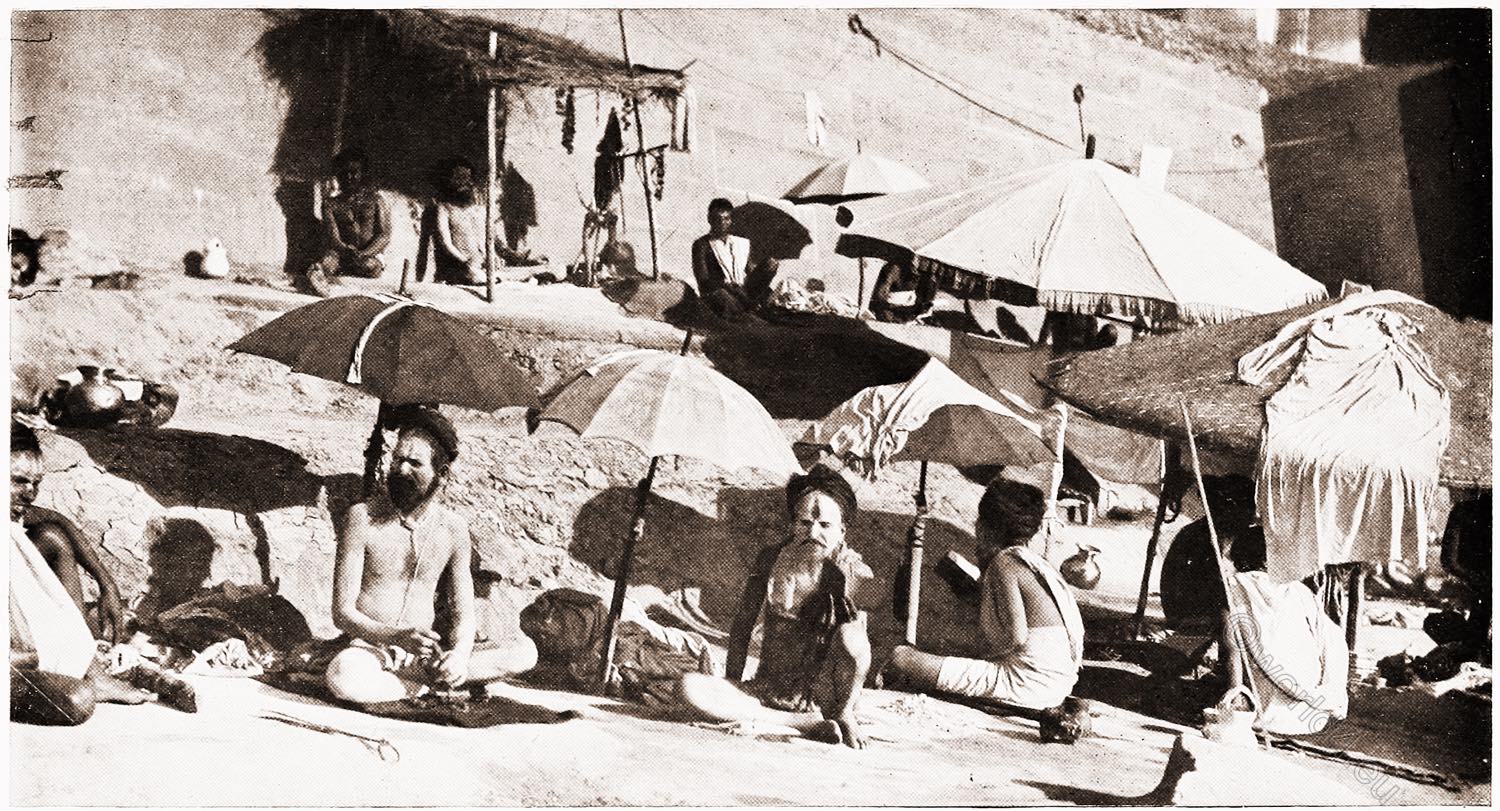
BRAHMANAS AND UPANISHADS
The natural evolution of Aryan thought and religion had so far produced three classes of literature–first the Vedic hymns, which I have already described; secondly the Brahmanas, which embody the priestly traditions of sacrifice; and thirdly the Upanishads, or philosophical discussions.
Sanskrit scholars have made widely different estimates of the periods covered by these three classes. No doubt the hymns of the Vedas reflect traditions of the Aryans long antecedent to the time when they reached India. Max Müller has fixed the date to which they belong as approximately D.C. 2000; other authorities place them as far back as B.C. 6000; while an Indian scholar, Mr. Tilak, from a study of the astronomical data given by the Rig-Veda, and from the description of the dawn and sunrise, and the phenomena of the seasons, believes that some of them refer to a time when the original Aryan home must have been at or near the Arctic circle.
The Brahmanas probably represent a development of Hinduism, for the most part, if not entirely, Indian. The age of their first compilation has been put between B.C. 1300 and B.C. 1100, but there are many later additions extending to perhaps B.C. 600. They are an extraordinary compilation of ritual practice and explanation, evolved by the imaginations of the priestly families, who piled form upon form and rite upon rite, until the simple piety of the early Aryans was buried in a mass of superstitious observances.
To European readers they are chiefly interesting for the light they throw upon modern Hindu ritual, and for the Aryan legends regarding the creation and the flood which have been preserved in them. The story of the deluge is as follows:-
The seventh Manu of the fourteen mythical progenitors of mankind was one day washing his hands when he caught a fish. The fish spoke and said, “Take care of me, and protect me from the big fish that would eat me, and I will one day save you”. Manu asked, “From what will you save me?” The fish answered, “A flood will come and destroy all living creatures. I will save you from that.” Manu kept the fish in a jar, until it grew so big that it begged to be put into a ditch, at the same time telling Manu to build a ship to prepare for the coming catastrophe.
Manu built the ship accordingly, and as the fish grew too big for the ditch, carried it down to the sea. When the flood came, Manu tied the ship to the horn of the fish, which dragged him swiftly towards the northern mountains, the Himalayas. Arrived there, the fish instructed him to tie his ship to the mountain-top, and then swain away.
As the flood subsided, the ship gradually descended the slope of the mountain, and Manu left it to perform worship and sacrifices. After a year a woman was produced from the sacrifices. Manu asked, “Who art thou?” “Thy daughter,” she replied. “How illustrious one, art thou my daughter?” he asked. She answered, “Those offerings of ghee, sour milk, whey and curds, which thou madest in the waters, with them thou hast begotten me. I am the blessing; make use of me at the sacrifice! If thou wilt do so, thou wilt become rich in offspring and cattle.”
He accordingly made use of her as the benediction in the middle of the sacrifice. “With her he went on worshipping and toiling in religious rites, wishing for offspring. Through her he generated this race, which is the race of Manu.”
The Upanishads, like the Brahmanas, are now incorporated in the four Vedas. Their first compilation is attributed to a time shortly after the offshoots from the first Aryan settlement of the Punjab began to spread to the Ganges valley. They form the basis of the later schools of Indian philosophy. Though deeply tinged with Oriental mysticism, they, unlike the Brahmanas, are almost free from ritualism and sectarian spirit; they are chiefly devoted to discussions as to the nature and means of realising a knowledge of Brahman, the Universal Soul and Cause of all things.
The Brahmanas and Upanishads, in fact, seem to represent two different currents of thought, which can be traced throughout the whole development of Hinduism. The one, the exclusiveness and pedantry of the narrow-minded priest, always concerned with the interests of priestcraft; the other, the true religious feelings of the people, interpreted by their most earnest thinkers.
The ethical stand-point of the Aryan race, as put forward in the Upanishads some three thousand years ago, call hardly be surpassed in the present day:-
“Having taught him the Vedas, a teacher exhorts his pupils thus: ‘Speak the truth. Practise virtue. Do not neglect the study of the Vedas. Having paid the honorarium to your preceptor (i.e. having returned home at the close of your studies), do not cut off the line of children (i.e. marry and bring up a family). Do not swerve from the truth. Do not swerve from virtue. Do not swerve from the good. Do not be indifferent to the attainment of greatness. Do not neglect your duties to the gods and to your parents. Honour your mother as a deity. Honour your father as a deity. Honour your guest as a deity. Do those deeds which are commendable, and not those that are otherwise. Imitate our good deeds, and not those that are otherwise…. Give alms with a willing heart. Do not give with an unwilling heart. Give wisely, Give with modesty. Give with fear. Give with a sympathetic heart.'” *)
*) The Upanishads, Translated by Sitnnath Tattvabhusan, Sam Brothers, 1904. Vol. II. p. 104.
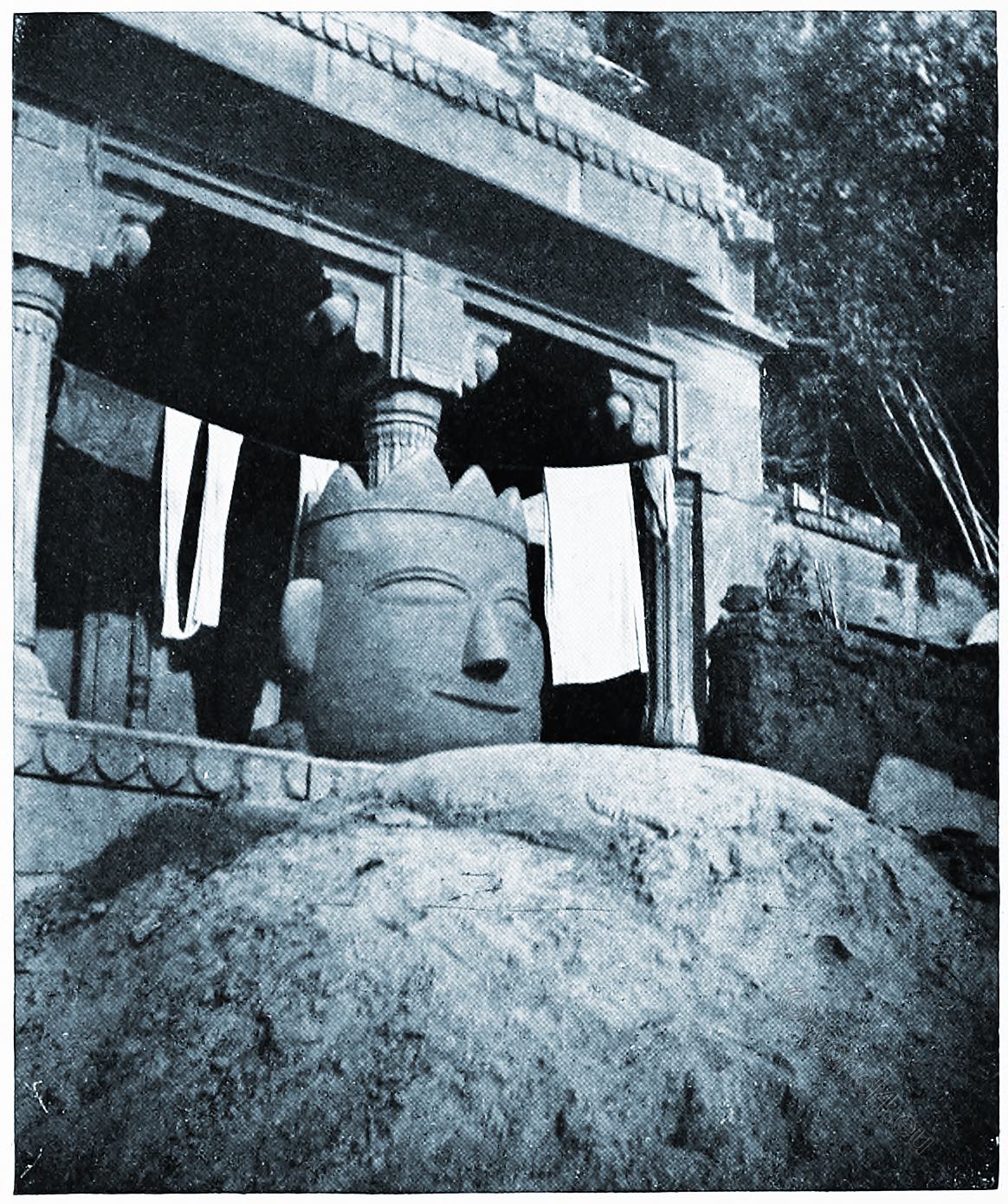
UPANISHAD STORIES
The story of Yama and Nachiketa is the most characteristic in the Upanishads. It is as follows:-
Nachiketa was a young Brahmin, who, having been hastily vowed by his father as a victim to Yama, the god of Death, cheerfully submitted. even though his father repented of his vow and hesitated to fulfil it. Owing to Death’s absence when Nachiketa arrived at his abode, he remained three nights without food. On his return Yarna, as an apology for the slight to his Brahmin guest, begged of him to ask for any three boons he might desire.
Nachiketa’s first request was that his father might have peace of mind and cease to feel anger towards him. This was immediately granted. The next was that Death would explain to him the manner of producing the sacrificial fire which led to heaven. To this also Death readily assented. Nachiketa’s last boon was that Death would tell him what all men desired to know, the mystery of the future life.
Yama said: “Ask for sons and grandsons who shall live a hundred years; ask for wealth, pleasure, power, long life for yourself-all that men hold most precious, but only not this-ask me no question about death”.
Nachiketa replied: “In all these things you offer, O Death, no wise man will take delight. They are things of a day; even all life is short. Keep your pleasures, power, and riches. The boon I have asked I have asked.”
Then Yama said: “The good, the pleasant, these are separate things, with different objects, binding all mankind. They who accept the good, alone are wise. They who prefer the pleasant, miss life’s real aim.
“Fools who live in darkness, believing themselves wise and learned, wander in devious ways, like blind men led by blind.
“To the man without understanding, thoughtless and deceived by wealth, the future life is not revealed. He who thinks this world alone exists, and the future is not, must yield himself to me time after time.
“The knowledge you would gain cannot be gained by reasoning. Few have the means of hearing it, few after hearing can understand it. It is subtler than an atom, and beyond the ken of reason.
“The wise man who has realised by spiritual communion that Divine Being *) invisible, hidden, pervading all things. who is in the heart and lives in inaccessible places, gives up both joy and sorrow.”
*) Brahman, the Universal Soul, or Self.
Nachiketa said: “That which is different from virtue and different from vice, different from the chain of cause and effect, different from the past and future, tell me of that”.
Yama replied: “The Worshipful One, whom all the Vedas tell of, to whom all discipline of mind and body is directed, for whom men acquire spiritual knowledge, I will speak to you briefly of that Worshipful One. He is AUM.
“Verily this syllable is Brahman, this syllable is the Highest. Knowing this, one obtains every desire.
“This help is the best, this help is the highest. Knowing this, one becomes glorified in the world of Brahman. “The real Self is neither born, nor dies. It is not produced. nor is aught produced from it. It is unborn, eternal. everlasting, and ancient. When the body is destroyed, it is not destroyed.
“If the slayer thinks he slays the Self, and if the slain believes the Self is slain, both are ignorant. The Self is neither slain nor slays.
“The wise man knowing the Self to be incorporeal-though existing in changing bodies-knowing it great and all-pervading, is free from grief.
“This Self cannot be realised by the Vedas, nor by reason, nor by learning. The wicked cannot know it, nor he whose mind is not at rest. It manifests itself to itself. Only Self knows Self.” (Abridged from Pandit Tattvabhusan’s translation.)
We may picture Benares in the later Vedic times as one of the first Aryan settlements in the Ganges valley – a clearing in the primeval forest, perhaps first occupied by the Dravidians or Kolarians. There they kept their cattle and cultivated the soil with the help of the conquered aboriginals, whom they called Dasyus. Their ordinary dwellings were probably of mud, roofed with bamboos and thatch-very like those in the villages round Benares now; the better ones might have been partly of brick or stone, plastered over and decorated with paintings in fresco, the most ancient form of pictorial art, such as the oldest Buddhist records describe.
It was an admirable site for such a settlement. The rich alluvial soil afforded plenty of sustenance for men and cattle. The Ganges was at the same time a protection from hostile invasions, and an easy highway of communication with the older Aryan settlements in the Punjab. The river Barna on the north, and the Asi on the south-a more important stream than it is now-gave protection from sudden attacks of the fierce aboriginal tribes dwelling in the densest forests, and called by the Aryans Rakshasas, demons. It only needed a wall or forts on the west to make the little colony secure on all sides.
The cool bathing in the splendid river and worship on its sunny banks would afford to the Aryan settlers refreshment for body and soul. So even in those remote times the place may have acquired a reputation as being propitious for the favoured people, and thus to them sacred soil, an oasis of spiritual life in the midst of the impious non-Aryan tribes, like Bramnavarta, their much-beloved horne in the north-west.
It has been supposed that the spiritual leaders of the Aryans began, about the time when the Kasis first appeared in the Ganges valley, to arrange the compilation of the Vedic hymns, the Brahmanas and the Upanishads, in order to preserve their traditional faith from the risk of corruption which was incurred by intermarriage with the Dravidian and Kolarian neighbours. Benares, therefore, may perhaps have begun already to establish its reputation as a great seat of Aryan philosophy and religion.
The first idea of caste, which was mainly that of race protection, originated at the same period, and from the same cause. But caste as it is now understood did not become a fixed institution for many centuries later. Even in the sixth century B.C., though there were restrictions as to eating together, and a fair complexion was regarded as indicating high birth, a low occupation by itself did not involve any social ostracism.
A Brahmin or Kshatriya could work at a trade or engage in agriculture without any dishonour or penalty.
Source: Benares, the sacred city: sketches of Hindu life and religion by Ernest Binfield Havell (1861-1934). London: Blackie, 1905.
Discover more from World4 Costume Culture History
Subscribe to get the latest posts sent to your email.



